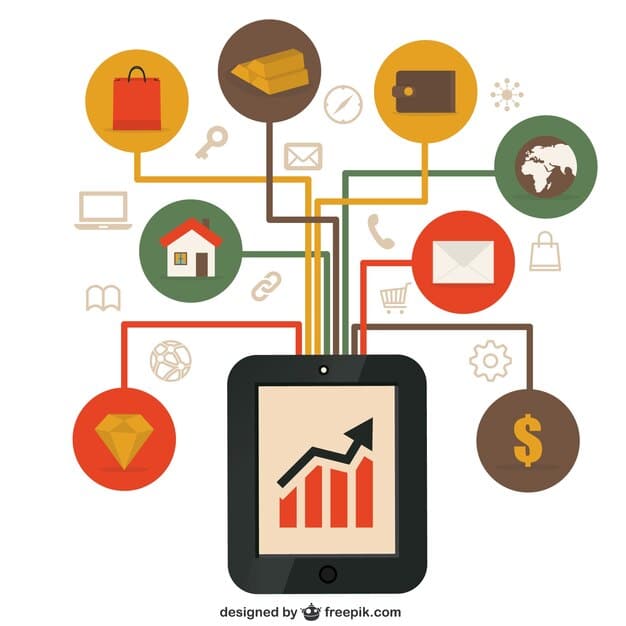Bridging the Digital Divide: Empowering Low-Income US Households

Bridging the digital divide for 20% of low-income US households requires a multi-faceted approach, integrating affordable internet access, device provision, digital literacy training, and policy reform to ensure equitable participation in the modern economy and society.
The ubiquity of the internet has transformed virtually every aspect of modern life, from education and employment to healthcare and civic engagement. However, for a significant portion of the population, access to this essential resource remains a formidable barrier. In the United States, approximately 20% of low-income households grapple with limited or no access to broadband internet and adequate devices, forming a profound digital divide.
Understanding the Digital Divide’s Core Challenges
The digital divide isn’t merely about lacking an internet connection; it’s a complex interplay of access, affordability, equipment, and digital literacy. For low-income households in the US, these challenges often compound, creating a cycle of exclusion from opportunities that are increasingly online. Understanding these fundamental hurdles is the first step toward devising effective and sustainable solutions.
Access and Affordability Barriers
Many low-income areas, particularly rural and some urban communities, simply lack the necessary broadband infrastructure. Even where infrastructure exists, the cost of internet service can be prohibitive. This financial strain forces families to choose between essential needs and connectivity, often leaving them disconnected.
- Infrastructure Gaps: Limited availability of high-speed internet in geographically isolated or economically disadvantaged regions.
- High Costs: Exorbitant monthly subscription fees and installation charges make broadband inaccessible for families on tight budgets.
- Lack of Competition: In some areas, limited internet service providers (ISPs) result in fewer affordable options and less incentive for price reductions.
Device Access and Quality
Owning a reliable device is as crucial as having an internet connection. Many low-income households cannot afford computers, laptops, or even reliable smartphones necessary for professional and educational tasks. Even if they have a device, it might be outdated, slow, or lack essential software, hindering effective use.
Digital Literacy and Skills Gap
Even with internet and devices, a lack of digital literacy can render them useless. Many individuals in low-income households have not had the opportunity to learn basic computer skills, navigate online platforms, or understand cybersecurity. This skills gap prevents them from fully leveraging the internet for education, job searching, telehealth, or civic participation.
- Basic Skill Deficits: Many struggle with fundamental tasks like using email, word processing, or online forms.
- Navigating Online Resources: Difficulty in identifying credible information, applying for jobs, or accessing government services online.
- Safety Concerns: Lack of awareness regarding online scams, privacy settings, and secure browsing.
Addressing the digital divide requires a holistic approach that tackles these interconnected issues head-on, ensuring that equitable access translates into meaningful participation and opportunity for everyone.
Government Initiatives and Policy Reforms for Digital Equity
Governments at federal, state, and local levels play a crucial role in bridging the digital divide. Through targeted policies, funding programs, and strategic partnerships, they can create an environment where affordable and accessible internet becomes a reality for all citizens.
Federal Programs and Subsidies
The US federal government has recognized the urgency of this issue, launching various initiatives aimed at improving connectivity. Programs like the Affordable Connectivity Program (ACP) offer vital subsidies to low-income households, significantly reducing the cost of internet service.
- Affordable Connectivity Program (ACP): Provides eligible households with a discount of up to $30 per month toward internet service, and up to $75 per month for households on qualifying Tribal lands.
- Broadband Equity, Access, and Deployment (BEAD) Program: Allocates billions to states for broadband infrastructure deployment, particularly in unserved and underserved areas.
- Lifeline Program: Offers discounts on phone and internet services, though its reach is less extensive than ACP for broadband.
These programs are critical, but their effectiveness depends on awareness, ease of enrollment, and sustained funding. Simplifying application processes and conducting extensive outreach are essential to ensure eligible families benefit.
State and Local Policy Innovations
States and municipalities are also stepping up with innovative policies. Some local governments are investing directly in municipal broadband networks, treating internet access as a public utility. Others are implementing digital inclusion plans that combine infrastructure development with digital literacy training and device distribution.
Examples include cities providing free Wi-Fi in public spaces or offering grants to community organizations that teach digital skills. These local efforts often complement federal programs, tailoring solutions to specific community needs and demographics.
Policy reforms might also include streamlining permitting processes for broadband infrastructure, promoting competition among ISPs, and ensuring consumer protections. By approaching the digital divide from multiple governmental angles, a more comprehensive and sustainable solution emerges, reaching low-income households that need it most.

Community-Led Initiatives and Partnerships
While governmental action is vital, the most effective strategies for bridging the digital divide often originate at the grassroots level, driven by community organizations, non-profits, and collaborations with the private sector. These initiatives can provide tailored solutions that resonate directly with the needs of low-income households.
Local Digital Inclusion Programs
Many non-profit organizations are establishing or expanding digital inclusion programs that address various facets of the divide. These programs often combine device giveaways, free or low-cost internet access points, and essential digital literacy training.
- Device Refurbishment and Donation: Organizations collect, refurbish, and distribute used computers and laptops to families who cannot afford new ones.
- Mobile Hotspot Libraries: Partnerships with public libraries allow individuals to check out mobile hotspots for home internet access.
- Community Technology Centers: Dedicated centers offer free computer access, printing services, and supervised internet use, along with basic tech support.
These programs are crucial because they break down multiple barriers simultaneously, ensuring that individuals not only have an internet connection but also the means and skills to use it effectively.
Corporate Social Responsibility and Private Sector Engagement
The private sector, particularly internet service providers (ISPs) and technology companies, has a significant role to play. Beyond offering discounted plans, corporate social responsibility initiatives can include direct investment in underserved communities, employee volunteer programs for digital literacy, and donations of equipment.
Some ISPs have launched their own low-cost broadband programs for eligible families, often in partnership with schools or public housing authorities. Tech companies can contribute by providing refurbished devices, software licenses, or expertise for training programs. Meaningful engagement from these entities can accelerate progress, particularly when their efforts are coordinated with community needs.
Forming strong partnerships between community groups, local government, and the private sector ensures that resources are maximized and that solutions are comprehensive and sustainable. This collaborative approach recognizes that bridging the digital divide is a shared responsibility, critical for the social and economic well-being of low-income households and the nation as a whole.
Enhancing Digital Literacy and Skills Training
The mere provision of internet access and devices is insufficient if individuals lack the foundational skills to utilize them effectively. For low-income households, targeted digital literacy and skills training are paramount to ensure meaningful participation in the digital age. This goes beyond basic computer use, encompassing critical thinking and online safety.
Tailored Training Programs
Effective training programs must be accessible, relevant, and culturally sensitive. They should address the specific needs of different demographic groups within low-income communities, such as seniors, non-English speakers, or those with disabilities.
- Basic Computer Skills: Courses covering topics like turning on/off a computer, using a mouse and keyboard, and navigating operating systems.
- Internet Navigation: Teaching how to use web browsers, search engines, and identify reliable sources of information.
- Online Communication: Instruction on email, video conferencing tools, and secure messaging platforms.
These programs are often most effective when delivered in familiar community settings like libraries, schools, or community centers, with flexible scheduling and patient instructors.
Addressing Specific Needs: Employment, Education, and Health
Digital literacy extends to using the internet for specific life-enhancing purposes. Training should empower individuals to leverage online resources for employment, education, and health management.
For job seekers, this means learning how to create online resumes, navigate job search portals, and participate in virtual interviews. For students and parents, it involves understanding online learning platforms and accessing educational resources. In healthcare, it includes managing appointments, accessing telehealth services, and understanding health information.
Crucially, digital skills training must also incorporate cybersecurity awareness. Many individuals are vulnerable to online scams, phishing attempts, and identity theft. Educating them on safe browsing practices, strong password creation, and identifying malicious content is essential for protecting their digital well-being. By integrating these specific applications and safety measures, training programs ensure that members of low-income households become confident and competent digital citizens.
The Role of Educational Institutions in Digital Inclusion
Educational institutions, from K-12 schools to community colleges and universities, are uniquely positioned to play a transformative role in bridging the digital divide, particularly for children and families in low-income households. Their influence extends beyond the classroom, reaching into the wider community.
Schools as Connectivity Hubs
Schools can serve as vital hubs for internet access and device distribution. During remote learning phases, many schools provided laptops and hotspots to students, highlighting their capacity to address immediate connectivity needs. This role can be formalized and expanded, transforming schools into year-round community resources.
- Device Loaner Programs: Permanent programs allowing students to check out laptops or tablets for home use, ensuring equitable access.
- Extended Wi-Fi Access: Making school Wi-Fi available in parking lots or specific areas outside school hours for public use.
- Homework Gaps: Addressing the challenge where students cannot complete assignments due to lack of home internet access, often referred to as the “homework gap.”
By leveraging existing infrastructure, schools can significantly mitigate device and access barriers for students and their families.
Integrating Digital Literacy into Curricula
Beyond providing access, schools are fundamental in embedding digital literacy skills from an early age. A comprehensive curriculum should not only teach how to use technology but also how to critically evaluate online information, practice responsible digital citizenship, and understand computational thinking.
This includes teaching media literacy to help students discern reliable sources from misinformation, especially relevant in today’s information landscape. It also involves training teachers to effectively integrate technology into their lessons, ensuring that students are prepared for a future where digital fluency is paramount.
Furthermore, schools can offer digital literacy workshops for parents and guardians. Empowering adults in low-income households with these skills enables them to better support their children’s education and participate more fully in the digital economy. This holistic approach ensures that digital inclusion is a family-wide endeavor, building a more connected and skilled community from the ground up.

Measuring Progress and Ensuring Sustainable Solutions
Bridging the digital divide for 20% of low-income households in the US is not a one-time fix but an ongoing commitment. To ensure sustainable solutions and effective allocation of resources, it’s crucial to continuously measure progress, adapt strategies, and foster long-term partnerships.
Data Collection and Impact Assessment
Robust data collection is fundamental to understanding where the digital divide persists, which interventions are most effective, and who is still being left behind. This involves tracking internet subscription rates, device ownership, and digital literacy levels among various demographic groups.
- Regular Surveys and Census Data: Utilizing national and local surveys to gauge connectivity and digital skills across different communities.
- Program Evaluation: Assessing the effectiveness of government subsidies, community training programs, and device distribution initiatives.
- Identifying Gaps: Pinpointing specific geographic areas or population segments that remain underserved, allowing for targeted interventions.
Without accurate data, efforts risk being misdirected or insufficient. Regular reporting and transparent evaluation are essential for accountability and continuous improvement.
Long-Term Funding and Policy Commitment
Sustainable progress hinges on consistent and adequate funding mechanisms. While one-time grants are helpful, long-term policy commitments and dedicated budget allocations are necessary to maintain infrastructure, support ongoing digital literacy programs, and ensure the affordability of services.
This might involve exploring innovative funding models, such as public-private partnerships that share the cost of broadband expansion, or establishing permanent digital equity funds. Policy frameworks should also be flexible enough to adapt to evolving technological landscapes and societal needs, preventing new forms of digital exclusion from emerging.
Ultimately, bridging the digital divide is an investment in human capital and economic growth. When low-income households are fully connected and digitally literate, they contribute more effectively to the workforce, engage more actively in civic life, and access better educational and health outcomes. By prioritizing long-term sustainability and data-driven decision-making, the nation can ensure that digital equity becomes a lasting reality for all.
| Key Area | Brief Description |
|---|---|
| 📶 Access & Affordability | Ensuring broadband infrastructure is available and costs are manageable for low-income families. |
| 💻 Device Provision | Providing reliable, affordable devices like laptops and tablets to those who can’t afford them. |
| 📚 Digital Literacy | Offering training programs to teach essential computer and internet skills for daily life. |
| 🤝 Collaborative Efforts | Fostering partnerships among government, non-profits, and the private sector for holistic solutions. |
Frequently Asked Questions About the Digital Divide
The digital divide refers to the gap between those who have access to modern information and communications technology, and those who do not. For low-income households, it’s crucial because lack of access hinders educational opportunities, limits job prospects, complicates healthcare access, and impedes civic participation, perpetuating economic disadvantages.
Key federal programs include the Affordable Connectivity Program (ACP), which provides discounts on internet service and connected devices, and the Broadband Equity, Access, and Deployment (BEAD) Program, which funds infrastructure buildout in unserved areas. The Lifeline program also offers limited phone and internet service discounts.
Beyond basic internet access, low-income households often face challenges such as lack of suitable and reliable devices (laptops, computers), insufficient digital literacy skills, and limited technical support. These factors collectively prevent them from fully utilizing the benefits of online resources and opportunities.
Community organizations play a vital role by offering direct digital literacy training, providing access to public computers and Wi-Fi, distributing refurbished devices, and acting as trusted local partners to help households enroll in affordable internet programs. They often tailor solutions to specific neighborhood needs.
Schools are crucial in providing in-school internet access and devices, implementing loaner programs for home use, and integrating digital literacy into their curriculum. They can also offer digital skills workshops for parents and guardians, ensuring that entire families gain essential online competencies.
Conclusion
Bridging the digital divide for the 20% of low-income households in the US is a complex but achievable goal, requiring a concerted effort from all sectors of society. By combining robust government initiatives, innovative community-led programs, responsible private sector engagement, and comprehensive digital literacy training, the nation can ensure that no one is left behind in an increasingly connected world. The benefits extend far beyond internet access, fostering greater equity in education, employment, healthcare, and civic participation, ultimately strengthening the social and economic fabric of the country.





